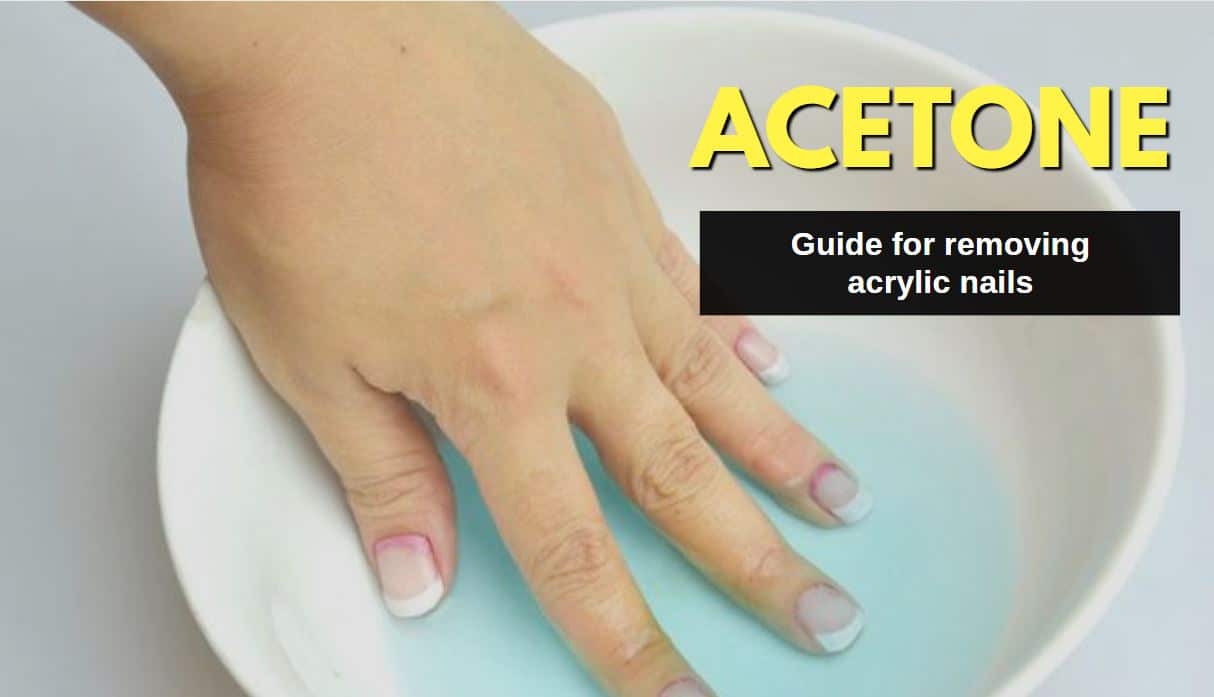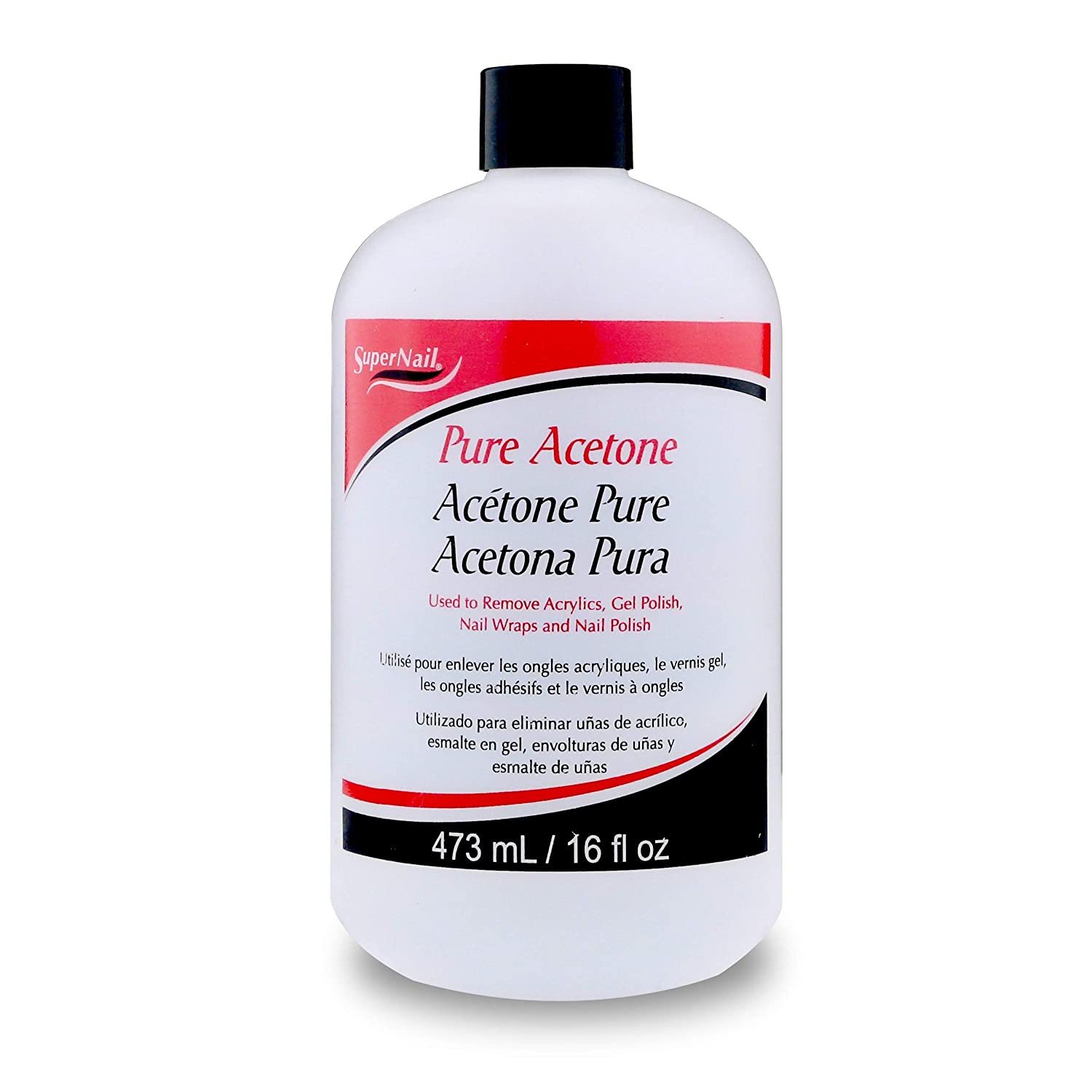Removing acrylic nails has become a common concern for many people who want to maintain healthy and beautiful nails. If you're wondering whether non-acetone products can effectively remove acrylic nails, you're not alone. This article will provide you with a detailed understanding of the process, alternatives, and best practices to ensure your nail health stays intact. Whether you're doing it at home or visiting a professional, this guide has everything you need to know.
Acrylic nails have become increasingly popular due to their durability and versatility. However, removing them can sometimes feel like a challenge, especially when you're considering different removal methods. The use of non-acetone products as an alternative is gaining attention, but does it work effectively? We'll dive deep into this question and provide you with all the necessary information to make an informed decision.
In this article, we'll explore the effectiveness of non-acetone solutions, alternative removal methods, and tips to ensure your nails remain healthy throughout the process. Whether you're a beginner or a seasoned nail enthusiast, this guide will equip you with the knowledge you need to take care of your nails safely and effectively.
Read also:Trevor Noah Is He Married Unveiling The Personal Life Of A Global Comedy Icon
Understanding Acrylic Nails and Their Removal
What Are Acrylic Nails?
Acrylic nails are artificial nails made from a combination of liquid monomer and powder polymer. They are applied to natural nails to enhance their appearance, strength, and durability. Acrylic nails are known for their resistance to chipping and breaking, making them a popular choice for people who want long-lasting manicures. However, like any cosmetic enhancement, acrylic nails require proper maintenance and removal to avoid damage to the natural nail bed.
Why Removing Acrylic Nails is Important
While acrylic nails are strong and durable, they can also cause damage to your natural nails if not removed properly. Over time, the glue and acrylic material can weaken the nail bed, leading to issues such as brittleness, discoloration, or even nail infections. Therefore, it's crucial to remove acrylic nails when they start to lift or when you're ready for a new look.
- Acrylic nails can cause damage if left on for too long.
- Proper removal ensures the health of your natural nails.
- Ignoring removal can lead to infections or other nail problems.
Will Non-Acetone Remove Acrylic Nails?
Non-acetone nail polish removers are often marketed as gentler alternatives to traditional acetone-based products. However, when it comes to removing acrylic nails, non-acetone solutions are generally ineffective. Acrylic nails are bonded to the natural nail using a strong adhesive that requires a solvent like acetone to break down. Non-acetone removers lack the necessary chemical properties to dissolve the acrylic material, making them unsuitable for this purpose.
Why Non-Acetone Isn't Effective
Non-acetone removers are formulated to remove regular nail polish without damaging the nail bed. They are typically water-based and do not contain the harsh chemicals found in acetone. While this makes them safer for daily use, it also limits their ability to dissolve the strong adhesives used in acrylic nails.
- Non-acetone lacks the solvent power to break down acrylic bonds.
- It is designed for regular nail polish removal, not acrylic nails.
- Using non-acetone for acrylic nails may result in prolonged soaking, which can damage the nail bed.
Effective Alternatives for Acrylic Nail Removal
Using Acetone for Acrylic Nail Removal
Acetone remains the most effective method for removing acrylic nails. It is a powerful solvent that can dissolve the acrylic material and adhesive, making it easier to lift the nails off the natural nail bed. When using acetone, it's important to follow proper safety precautions to avoid irritation or damage to the skin.
Steps for Safe Acetone Removal
Here’s a step-by-step guide to safely remove acrylic nails using acetone:
Read also:Jenn Im And Ben Divorce A Comprehensive Look At Their Relationship Journey
- Soak cotton pads in acetone and place them on each nail.
- Wrap each finger with aluminum foil to keep the cotton pads in place.
- Let the nails soak for 10-15 minutes to allow the acetone to break down the acrylic.
- Gently push off the acrylic nails using a cuticle stick or orangewood stick.
- Moisturize your hands and nails afterward to prevent dryness.
Non-Acetone Alternatives: What Works?
Hybrid Solutions
While non-acetone alone won't remove acrylic nails, some hybrid solutions combine non-acetone ingredients with other solvents to create a gentler removal experience. These products are designed to minimize irritation while still effectively breaking down the acrylic material. However, their effectiveness may vary depending on the quality and formulation of the product.
Natural Remedies
Some people prefer natural remedies for nail care, but it's important to note that these methods may not work as effectively as acetone. Options like coconut oil, olive oil, or baking soda can help soften the acrylic nails, but they require significant time and effort. These methods are best suited for those who want to avoid chemicals altogether but are willing to invest more time in the process.
Tips for Maintaining Healthy Nails After Removal
Moisturizing Your Nails
After removing acrylic nails, it's essential to moisturize your nails and cuticles to prevent dryness and brittleness. Use a high-quality hand cream or cuticle oil to keep your nails hydrated and healthy. Regular moisturizing can help restore the natural strength and flexibility of your nails.
Avoiding Damage
During the removal process, it's crucial to avoid damaging your natural nails. Be gentle when pushing off the acrylic material, and avoid using excessive force. If you encounter resistance, reapply the acetone and let it soak for a few more minutes before trying again.
Common Mistakes to Avoid
Using Non-Acetone as a Shortcut
One of the most common mistakes people make is trying to use non-acetone products as a shortcut for acrylic nail removal. This can lead to frustration and potential damage to the nail bed. Always use the appropriate tools and solutions to ensure a safe and effective removal process.
Ignoring Proper Safety Precautions
Another mistake is ignoring safety precautions when using acetone. Acetone can be harsh on the skin and nails if not used properly. Always wear gloves to protect your skin and ensure proper ventilation to avoid inhaling fumes.
Expert Insights and Recommendations
Consulting a Professional
If you're unsure about the removal process or prefer a professional touch, consider visiting a nail salon. Professionals are trained to remove acrylic nails safely and effectively, minimizing the risk of damage to your natural nails. They can also provide personalized recommendations for maintaining healthy nails.
Choosing the Right Products
When selecting products for nail care, always opt for high-quality and reputable brands. Look for products that are specifically formulated for acrylic nail removal and contain the necessary solvents for effective results. Reading reviews and seeking recommendations can also help you find the best products for your needs.
Data and Statistics on Acrylic Nail Removal
According to a survey conducted by the International Nail Technicians Association, approximately 70% of people who wear acrylic nails prefer professional removal services. This statistic highlights the importance of proper removal techniques and the growing demand for safe and effective solutions. Additionally, studies have shown that using acetone-based removers reduces the risk of nail damage compared to non-acetone alternatives.
Conclusion
In summary, non-acetone products are not effective for removing acrylic nails due to their lack of solvent power. Acetone remains the most reliable and efficient method for breaking down the acrylic material and adhesive. By following proper removal techniques and maintaining good nail care practices, you can ensure the health and beauty of your natural nails.
We encourage you to share your thoughts and experiences in the comments section below. If you found this article helpful, consider sharing it with others who may benefit from the information. For more tips and advice on nail care, explore our other articles and resources on the website.
Table of Contents

